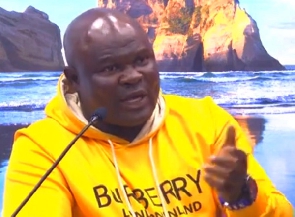In the early years of his reign, he met President Muammar Al Gadhafi of Libya who was paying a visit to Ghana by road. This was at his palace in Kumasi, His engagements with other world leaders such as the Queen of Great Britain, Elizabeth 11, former President of the World Bank, Mr James D. Wolfensohn, former President of South Africa, Mr Nelson Mandela, and President Thabo Mbeki also of South Africa were used to foster relationships.
He has also put his case across to Queen Beatrix of Holland, President of Sierra Leone, Alhaji Tejan Kabbah other include the President of Ethiopia, the Archbishop of Canterbury, King Mohammed VI of Morocco, and President Horst Kholer of Germany among many others on the wellbeing of Africa and Ghana for that matter.
He has over the years called on other traditional leaders on the African continent “to assert themselves and play meaningful roles by mobilising the people in their respective communities for rapid socio-economic development. This is in the right direction because it is believed that traditional leaders on the continent of Africa have a huge role in helping to ensure the holistic development of the people.
“African traditional leaders needed to build confidence in themselves and present a united front in the preservation of their status and the protection of their values and cultural heritage.” The 69 year old “has established a solid foundation for co-operation between tradition and modernism, by emphasizing the need for tradition to redefine itself in a rapidly changing world without losing its essence.”
Evidently, the past 12 years or so has seen him ably strategising with some other eminent traditional leaders to working extremely hard in bringing to an end a 17-year-old Dagbon chieftaincy dispute resulting in the ensuring leadership for the people with the enskinment of a new Ya-Na.
These and many other initiatives to ensure peace within commotion circles among politicians, religious leaders, and even for his own sub-chiefs are there for all to see. Otumfuo Osei Tutu II has brought peace and reconciliation to his kingdom by settling over five hundred chieftaincy and land disputes.
One intriguing initiative towards peace in Ghana that the king had diplomatically and successfully perused over the years is about what he revealed recently that “from the days of Jerry Rawlings —John Kufuor to present day John Mahama — Nana Addo Dankwa Akufo-Addo, he had mediated behind closed doors sometimes on the eve of elections just for Ghana to have peace.”
The king has revealed that he is the reason why Ghana has enjoyed peace after every general election for the past 27 years adding that his interventions have tremendously helped to defuse severe tensions between opposing political party leaders after general elections in the country.
This is an issue hailed by both the very first President of the fourth republic and the very latest, Jerry John Rawlings and Nana Addo Dankwa Akufo-Addo respectively. President Akufo-Addo has described the king of the Asante kingdom “as a pillar of peace and development in the country. According to him, the Asante Monarch has played a pivotal role in Ghana’s development and peace since his assumption as the King of the Asante Kingdom’ while Flt Lt (Rtd) Rawlings’ admiration recounts “Otumfuo’s rule over Asanteman with wisdom and fortitude, which has brought greater glory to undoubtedly one of Africa’s, leading Kingdoms.”
One of the monumental initiates was his first to Kyebi, the capital of the people of the Akyem Abuakwas at the special invitation by the Okyehene, Amoatia Ofori Panin 11 as the special guest of honour at the 75th anniversary of celebration of the death of the chief of Akyem Abuakwa Traditional Area, Nana Sir Ofori Atta 1,
Importantly it did not only shamed critics but also refuted the seemingly tension and rivalry between the two peoples who crucially have many things in common.
At the durbar to climax the three-month-long cerebrations, Otumfour announced a similar visit by the Okyehene on the next Akwasidai. This outstanding show of brotherliness between the two brings to the fore the importance of education, social intimacy, mutual understanding and positive aspiration by traditional and other leaders of this country.
His quest for social-economic development has been so paramount hence his exemplary determination to set up the Asanteman Economic Revitalisation Plan, which has the objective of promoting private and corporate investment in Local Industries, re-afforestation, and irrigation, programmes. In addition, he has his own initiative, a pilot project to encourage and motivate on “Promoting Partnerships with Traditional Authorities Project” (PPTAP).
The main purpose of the PPTAP is to assist and support the substantively integrate and improve deprived remote and rural communities’’ involvement in development activities and also help focus the contribution and influence of traditional authorities in socio-economic development in their areas.
By this he has thrown a huge challenge to his Traditional Leaders to demonstrate their capacity to use their own resources in response to financial support made available by the Government or the World Bank to help develop their communities as per part of the objectives of the project.
It is therefore fascinating to note that during the celebration of his 20 years on the prominent golden stool, the progressive occupant has launched a $400 million development fund to implement a 10-year development plan for his kingdom.
Recently the king has initiated a 10-year development drive expected to cost $400 million to transform Kumasi into a modern industrial city. The primary objective is to help create about 3,000 direct and 2,000 indirect jobs for the youth in the country. Among other things, there will be a construction of a jute-processing factory at Sabin Akrofuom (Nkoranza) to promote cocoa, cashew nut and other related crops to grow the local economy.
Undoubtedly, Asanteman has seen so much transformation in all aspect of human life in the past 20 years than any other period. The physical structure edifice of the seat of the king, Manhyia palace is so befitting and can be compared to any renowned monastery edifice in the world, thanks to the extraordinary vision and the willpower of the 16th occupant of the golden stool.
Chieftaincy in the country, today has been so prestigious and respected with many educated and well-placed professionals entering primarily due to the path some leaders like Otumfour Osei Tutu have paved.
Definitely not exhibiting any signs of satisfaction, accomplishment, or complacency, he still believes there is more to be done than what has been achieved. He, therefore, subjects himself to his subjects for assessment of the 20 years rule. The king does not see himself as lording over the people but rather a practical leader who wishes his people well in all aspect of their lives, thus requesting for a genuine assessment of his stewardship over the 20-year period.
Otumfuo Osei Tutu II is a great Leader of Asanteman, leading in the preservation of cultural heritage as well as combining modernism and tradition to promote education, health, and economic development of his people.”
He has ultimately and holistically changed the old face of chieftaincy, which was to rule and lord over to a new dimension of chieftaincy, which is peace and development.
Opinions of Wednesday, 1 May 2019
Columnist: Nana Sifa Twum



















